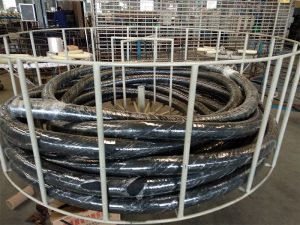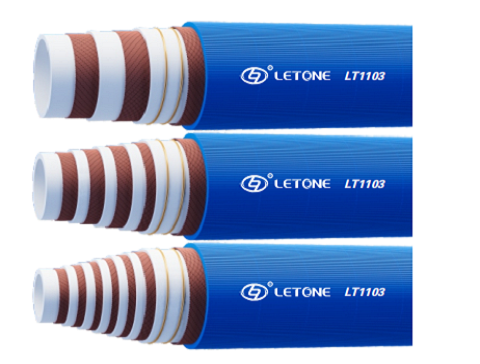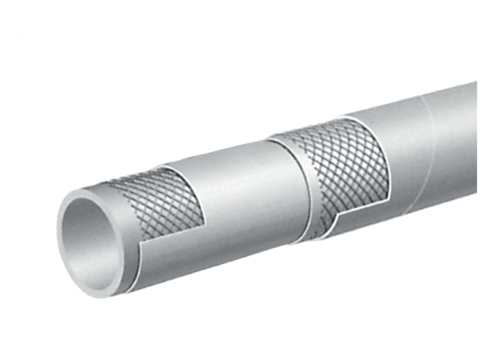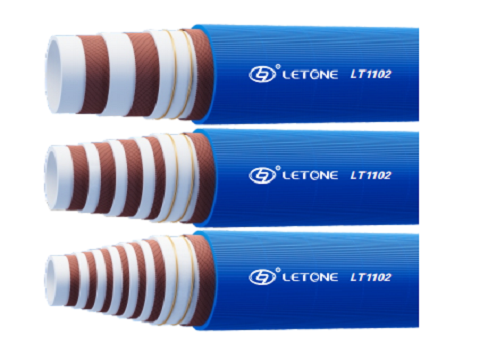Black petroleum suction and discharge pipe is one of the commonly used pipeline materials in modern industry. Due to its excellent corrosion resistance, high temperature resistance, and pressure resistance, it is widely used in liquid transportation and discharge fields in industries such as petroleum, chemical, pharmaceutical, and food.
The manufacturing process of black petroleum suction and discharge pipes is not simple. Firstly, high-quality stainless steel pipes need to be selected as raw materials, and processed into the required pipe length and diameter through processes such as cutting, polishing, and polishing. To ensure the sealing and connection strength of the pipeline, welding and heat treatment processes are required. At the same time, in order to improve the service life and corrosion resistance of pipelines, it is necessary to carry out internal and external anti-corrosion treatment, such as spraying anti rust paint or galvanizing.
 The characteristic of black petroleum suction and discharge pipes lies in their excellent corrosion resistance. Due to the strong corrosiveness of transportation media in industries such as petroleum and chemical, the corrosion resistance of pipelines is crucial. The black oil suction and discharge pipe is made of high-quality stainless steel material, which has undergone precision polishing and anti-corrosion treatment, and can effectively resist various chemical and oxidative corrosion, ensuring the service life and safety of the pipeline.
In addition, black petroleum suction and discharge pipes also have good high-temperature and pressure resistance performance. In industries such as petroleum and chemical, the temperature of the conveyed liquid is relatively high, and pipelines need to be able to withstand high temperatures without deformation or rupture. The black oil suction and discharge pipe has undergone precise heat treatment and welding process, which has high heat resistance and compressive performance, ensuring stable operation of the pipeline in high temperature and high pressure environments.
Due to these advantages, the application of black petroleum suction and discharge pipes is becoming increasingly widespread in industries such as petroleum, chemical, pharmaceutical, and food. It can be used in various liquid transportation and discharge systems, such as oil transportation, chemical reactor feeding, sewage treatment, etc. Meanwhile, due to its excellent corrosion resistance and long service life, black petroleum suction and discharge pipes have also become one of the preferred materials in the industrial pipeline field.
However, although black petroleum suction and discharge pipes have many advantages, there are also some issues that need to be noted during use. Firstly, the installation and connection of pipelines must strictly comply with relevant specifications and technical requirements to ensure the sealing and stability of the pipelines. Secondly, for conveying media containing impurities or particles, regular pipeline cleaning and maintenance should be carried out to prevent pipeline blockage or wear. In addition, for pipeline systems with different uses, appropriate pipe diameters, materials, and anti-corrosion treatment methods should be selected according to actual needs to ensure the safety and service life of the pipelines.
In order to better utilize the role of black petroleum suction and discharge pipes, research and application in the following areas can be strengthened in the future: firstly, further exploration of new stainless steel materials and anti-corrosion technologies to improve the performance and service life of pipelines; Secondly, strengthen the research on intelligent monitoring and maintenance technology of pipeline systems, and achieve real-time monitoring and early warning of pipeline systems; Thirdly, promote environmentally friendly pipeline connection methods and anti-corrosion materials to reduce environmental pollution and resource consumption in pipeline systems.
In summary, black petroleum suction and discharge pipes, as an important industrial pipeline material, have broad application prospects and market demand. Understanding its manufacturing process, characteristics, and application areas, and strengthening related research and application, can help better play its role and promote sustainable development in the industrial pipeline field.
The characteristic of black petroleum suction and discharge pipes lies in their excellent corrosion resistance. Due to the strong corrosiveness of transportation media in industries such as petroleum and chemical, the corrosion resistance of pipelines is crucial. The black oil suction and discharge pipe is made of high-quality stainless steel material, which has undergone precision polishing and anti-corrosion treatment, and can effectively resist various chemical and oxidative corrosion, ensuring the service life and safety of the pipeline.
In addition, black petroleum suction and discharge pipes also have good high-temperature and pressure resistance performance. In industries such as petroleum and chemical, the temperature of the conveyed liquid is relatively high, and pipelines need to be able to withstand high temperatures without deformation or rupture. The black oil suction and discharge pipe has undergone precise heat treatment and welding process, which has high heat resistance and compressive performance, ensuring stable operation of the pipeline in high temperature and high pressure environments.
Due to these advantages, the application of black petroleum suction and discharge pipes is becoming increasingly widespread in industries such as petroleum, chemical, pharmaceutical, and food. It can be used in various liquid transportation and discharge systems, such as oil transportation, chemical reactor feeding, sewage treatment, etc. Meanwhile, due to its excellent corrosion resistance and long service life, black petroleum suction and discharge pipes have also become one of the preferred materials in the industrial pipeline field.
However, although black petroleum suction and discharge pipes have many advantages, there are also some issues that need to be noted during use. Firstly, the installation and connection of pipelines must strictly comply with relevant specifications and technical requirements to ensure the sealing and stability of the pipelines. Secondly, for conveying media containing impurities or particles, regular pipeline cleaning and maintenance should be carried out to prevent pipeline blockage or wear. In addition, for pipeline systems with different uses, appropriate pipe diameters, materials, and anti-corrosion treatment methods should be selected according to actual needs to ensure the safety and service life of the pipelines.
In order to better utilize the role of black petroleum suction and discharge pipes, research and application in the following areas can be strengthened in the future: firstly, further exploration of new stainless steel materials and anti-corrosion technologies to improve the performance and service life of pipelines; Secondly, strengthen the research on intelligent monitoring and maintenance technology of pipeline systems, and achieve real-time monitoring and early warning of pipeline systems; Thirdly, promote environmentally friendly pipeline connection methods and anti-corrosion materials to reduce environmental pollution and resource consumption in pipeline systems.
In summary, black petroleum suction and discharge pipes, as an important industrial pipeline material, have broad application prospects and market demand. Understanding its manufacturing process, characteristics, and application areas, and strengthening related research and application, can help better play its role and promote sustainable development in the industrial pipeline field.







